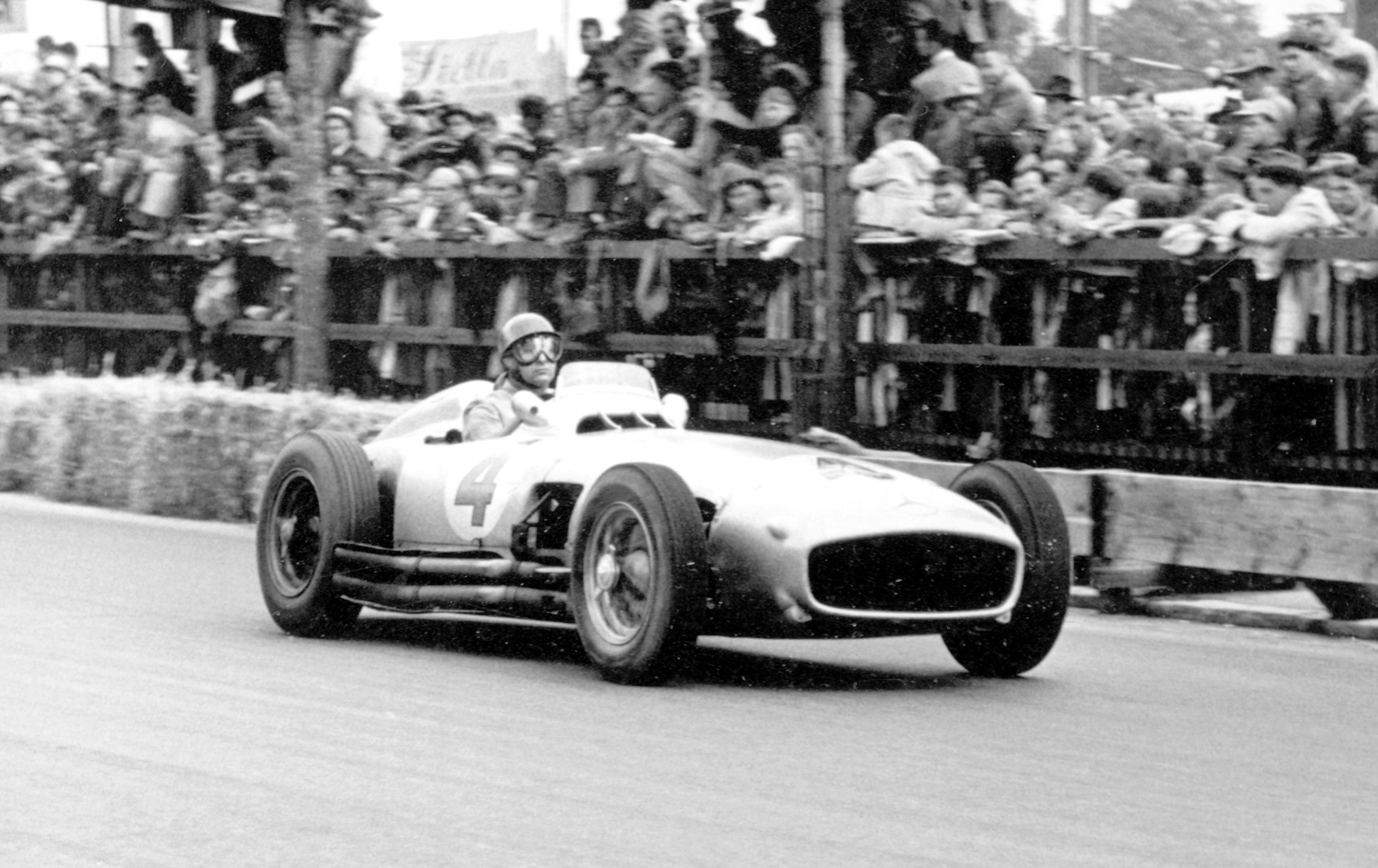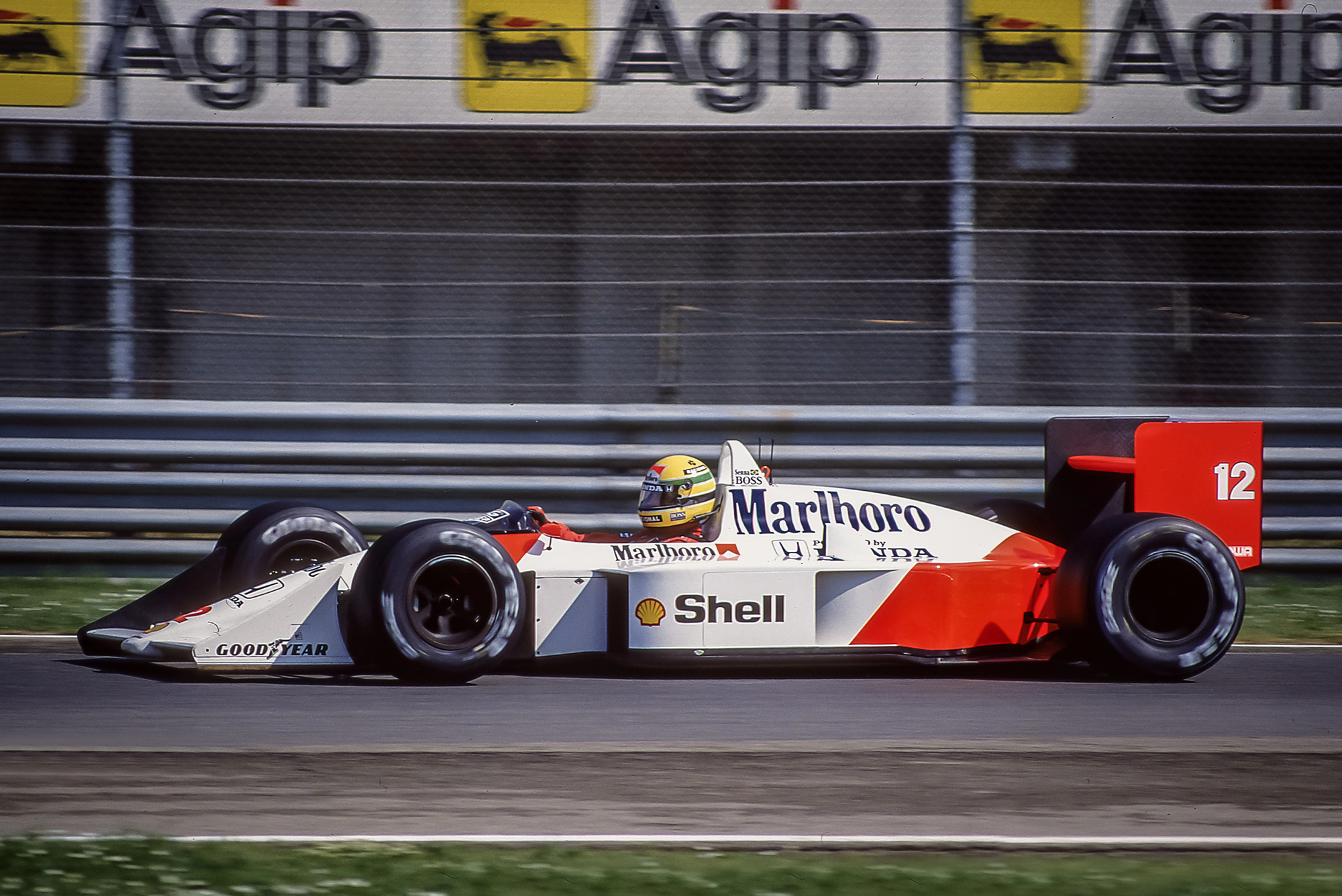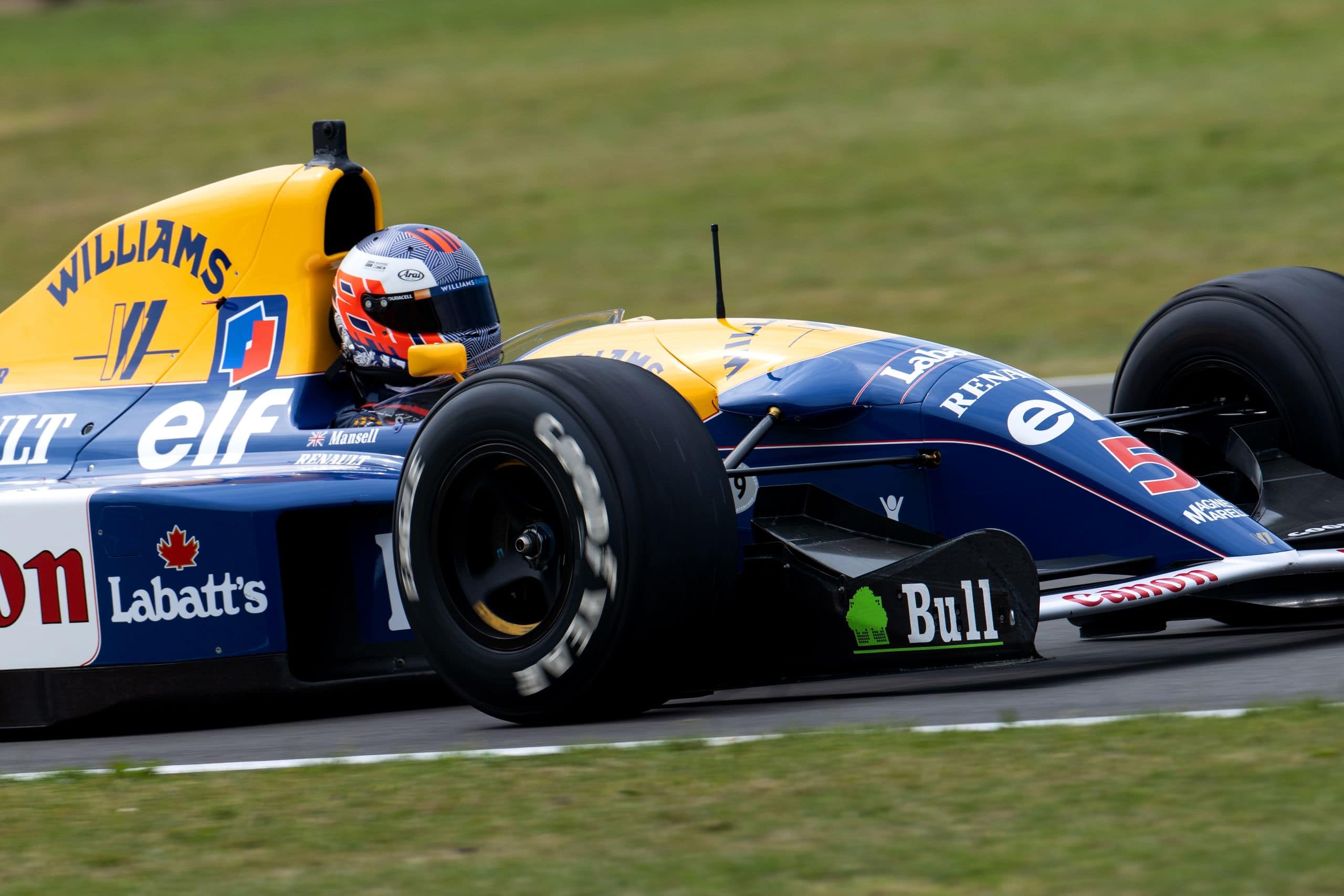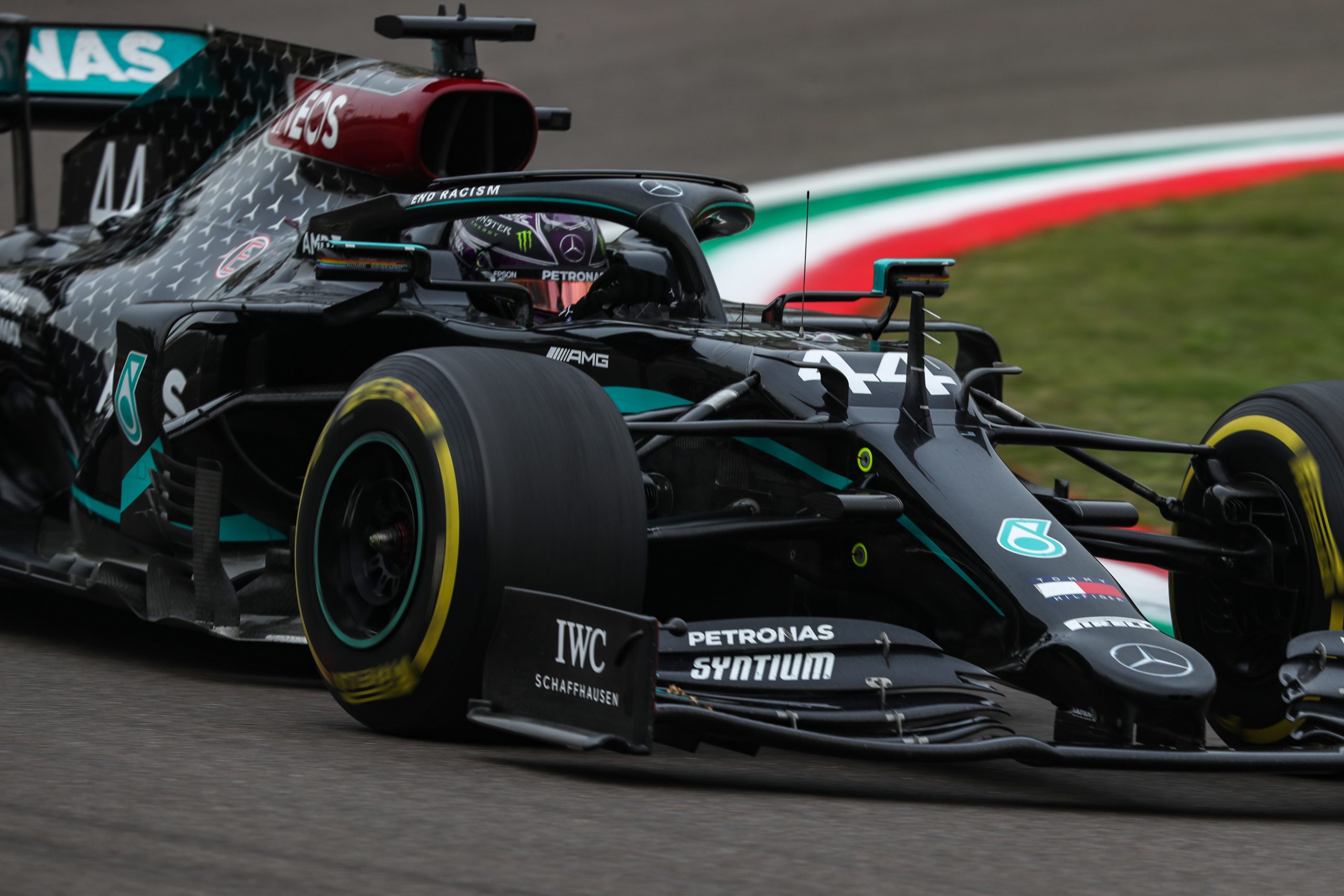The Most Memorable F1 Cars Of All Time
Formula 1 has produced countless racing machines since the championship began in 1950, but only a select few have earned the title of truly memorable. The most iconic cars stand out not just for victories, but because they combined technical innovation, championship success, and cultural impact that still resonates decades after they last raced.
According to veteran journalist Maurice Hamilton, who has attended more than 500 Grands Prix, the greatest Formula 1 cars embody “engineering innovations, their impact on the automotive industry, historic races, drivers, pioneering engineers and teams” that shaped the sport’s evolution.
Since Formula 1’s inception, only 34 men have achieved World Champion status, each associated with specific cars that defined their era. Expert documentation identifies 50 iconic F1 cars spanning from 1950 to the present day as the definitive collection of the sport’s most legendary machines.
With analysis from Telecomasia.net, let’s rewind and review some of the most memorable F1 cars of all time…
Early Era Legends (1950s-1960s)
The foundation of the most memorable F1 cars of all time was established during Formula 1’s early decades, when pioneering manufacturers created the templates for future success. This era produced machines that defined the sport’s aesthetic and competitive spirit while establishing the technical principles that continue influencing modern car design.

The Mercedes W196: Silver Arrow Perfection
Mercedes-Benz entered Formula 1 in 1954 with the W196, a silver machine that dominated with advanced engineering and aerodynamic understanding ahead of its time. The car’s streamlined bodywork for high-speed circuits and exposed-wheel configuration for tighter tracks demonstrated early adaptability concepts. Juan Manuel Fangio drove the W196 to back-to-back championships in 1954 and 1955, establishing both driver and machine as legends.
The W196’s fuel injection system and desmodromic valve operation represented technical sophistication that wouldn’t become standard for years. Its immediate success and withdrawal after just two seasons following the Le Mans disaster created an aura of mystery and excellence that persists today.
The Lotus 25: Chapman’s Revolutionary Design
Colin Chapman’s Lotus 25 introduced the monocoque chassis construction to Formula 1 in 1962, replacing traditional space-frame designs with a lightweight aluminum shell that integrated the driver compartment and structural elements. This innovation reduced weight while increasing rigidity, creating performance advantages that every subsequent F1 car would adopt.
According to popular legend, Colin sketched the car on a napkin while having lunch with team designer Mike Costin. The fact that one of the best racing drivers of all time, Jim Clark, was at the wheel of the car, already hints at the fact that with such a combination, Lotus had achieved great success. Indeed, Clark only lost the title to Graham Hill because a bolt in the car unscrewed in the decisive race, causing the Scot to leak oil and crash.
However, in 1963, Jim redeemed himself by winning 7 of the 10 races of the championship. But the story of Lotus 25 was not over. The car raced until 1965, with a total of 14 wins.
The car’s distinctive appearance and Chapman’s engineering philosophy established Lotus as a constructor capable of challenging established manufacturers through superior thinking rather than unlimited resources.
Ferrari 500. 1952-1957
The Ferrari 500 was the defining car of the early 1950s, designed by Aurelio Lampredi to master the Formula 2 regulations that were temporarily adopted for the World Championship in 1952 and 1953. At a time when other manufacturers struggled to adapt, Ferrari produced a machine that was both technically refined and relentlessly reliable.
The car debuted at the 1952 Swiss Grand Prix, and Alberto Ascari immediately established its supremacy. Powered by a naturally aspirated 2.0-liter four-cylinder engine producing around 165 horsepower, the Ferrari 500 was not the most powerful car of its generation, but its lightweight chassis and balanced handling made it perfectly suited to the twistier circuits that dominated the calendar. The tubular steel frame, double wishbone front suspension, and de Dion rear axle combined to create a stable, predictable platform that allowed Ascari to extract maximum consistency.
Ascari won every championship race he entered in 1952, missing only the Indianapolis 500 (which was part of the World Championship calendar but contested under different rules). He followed that with another dominant season in 1953, securing back-to-back World Championships. His run of nine consecutive wins between 1952 and 1953 stood as a Formula 1 record for seventy years, until Max Verstappen finally surpassed it in 2023 with ten straight victories.
Privateer drivers continued to race the Ferrari 500 in non-championship events and smaller series until as late as 1957, a testament to the car’s durability and competitiveness even after the rules had shifted. For Ferrari, the 500 cemented its reputation as the team to beat in postwar Formula 1, and for Ascari, it remains the car most closely tied to his legacy as one of Ferrari’s greatest champions.
The Golden Age Icons (1970s-1980s)
The 1970s and 1980s produced some of the most memorable F1 cars of all time, as manufacturers combined increased technical sophistication with the era’s most charismatic drivers. This period saw the emergence of ground effects, turbo engines, and aerodynamic development that created visually striking machines with performance capabilities that pushed safety and engineering boundaries.

McLaren M23. 1973-1978. 16 victories
The McLaren M23 was one of the most successful and long-lived designs of the 1970s, racing for six seasons between 1973 and 1978. Designed by Gordon Coppuck, it was inspired by the McLaren M16 IndyCar and carried over the wedge-shaped chassis that defined much of the era. Its adaptability was its greatest strength: the car could be configured for a wide range of circuits and regulatory changes, making it competitive long after most rivals had been retired.
Underneath, the M23 used the proven Cosworth DFV 3.0-liter V8 engine producing around 465 horsepower, paired with a Hewland gearbox. Its monocoque chassis provided strength and safety, while suspension refinements allowed drivers to extract consistent pace across different track conditions. Aerodynamics were evolving quickly during this period, and the M23’s wedge profile and adjustable wings gave it flexibility as the sport’s understanding of downforce advanced.
The M23 delivered McLaren’s first Formula 1 World Championship in 1974, with Emerson Fittipaldi taking the drivers’ crown and the team securing the constructors’ title. Two years later, in 1976, James Hunt famously won his only championship in an M23, overcoming Niki Lauda in a season that remains one of the most dramatic in Formula 1 history. That rivalry, played out across 16 races and later immortalized in the film Rush, cemented the M23’s place in racing folklore.
Across its lifespan, the M23 started 80 Grands Prix and achieved 16 victories, 14 pole positions, and 10 fastest laps. Its competitiveness against evolving opposition, including Ferrari’s 312T and Lotus’s 77, highlighted its balance and durability. Even as ground-effect designs emerged in the late 1970s, privateers continued to run the M23, underlining its robustness and adaptability.
The McLaren M23 is remembered for its statistics and for what it represented: the moment McLaren established itself as a championship-winning force in Formula 1. Its combination of reliability, driveability, and adaptability made it a cornerstone in the team’s history and a symbol of 1970s Formula 1.
Ferrari 312T: The Prancing Horse’s Technical Masterpiece
Ferrari’s 312T revolutionized Formula 1 in 1975 through Mauro Forghieri’s innovative transverse gearbox design, which positioned weight ahead of the rear axle to enhance central mass concentration. This technical innovation created superior weight distribution that improved handling characteristics.
The 312T’s flat V12 engine produced 495 bhp at 12,200 rpm, providing significant power advantages over the Cosworth DFV engines used by most competitors. Niki Lauda and Clay Regazzoni demonstrated the car’s capabilities with 8 race wins in 1975, along with 9 pole positions and 6 fastest laps.
Forghieri’s redesign created a highly maneuverable machine with lower polar inertia that proved more agile in corners than any predecessors, establishing new benchmarks for Formula 1 handling characteristics.
McLaren MP4/4: Perfection in Carbon Fiber
The McLaren MP4/4 is widely regarded as the most dominant car in Formula 1 history. In the 1988 season, Ayrton Senna and Alain Prost combined to win 15 of the 16 Grands Prix. Designed under the leadership of Steve Nichols with key influence from Gordon Murray, the MP4/4 represented the ultimate refinement of turbocharged Formula 1 machinery before turbos were banned in 1989.
At the heart of the car was Honda’s RA168E 1.5-liter V6 turbo engine, producing around 650 horsepower in race trim and over 900 horsepower in qualifying. Its compact packaging and reliability were unmatched, giving McLaren both raw pace and consistency across the calendar. The chassis was a low-line carbon fiber monocoque, which allowed Murray to lower the driver’s seating position dramatically, improving aerodynamics and center of gravity. This design gave the MP4/4 a sleek profile that maximized efficiency on both fast straights and in high-speed corners.
Senna and Prost extracted the maximum from the package, though their rivalry created as many headlines as the car’s performance. Senna won eight races and secured his first World Championship, while Prost took seven victories and finished second in the standings. The only race McLaren did not win was the Italian Grand Prix at Monza, where Senna retired after a late collision, allowing Ferrari’s Gerhard Berger to take an emotional victory just weeks after the death of Enzo Ferrari.
The MP4/4’s statistics are staggering: 15 wins, 15 pole positions, and 10 fastest laps out of 16 races. Beyond the numbers, the car has come to symbolize an era of engineering excellence, Honda’s peak in Formula 1, and one of the most intense driver rivalries ever witnessed.
The McLaren MP4/4 is remembered both as a machine of technical brilliance and also as a cultural icon. Its red-and-white Marlboro livery, the battles between Senna and Prost, and the sense of inevitability it carried each weekend make it one of the most memorable Formula 1 cars of all time
Lotus 72. 1970-1975. 20 victories
Brazilian driver Emerson Fittipaldi certainly had a lot of luck with cars in his career as he won the World Championship at the wheel of the Lotus 72. The Lotus 72A and its variants 72B, 72C, 72D, 72E and 72GF influenced the development of car designs in motor racing. The Lotus had a wedge-shaped chassis, the airbox disappeared at the front (the engine was cooled via airboxes on the sides of the cockpit) and this solution improved downforce and reduced the aerodynamic drag of the car.
The car was very fast. Between 1970 and 1975 it won 20 races and two World Championships (1970 and 1972) for Lotus. However, it was not particularly reliable. In training for the Italian Grand Prix, a brake shaft failure caused the death of Jochen Rindt, who became the first posthumous world champion.
Williams FW11/FW11B. 1986-1987
Visually, this car did not stand out much on the grid, but its main weapon was the Japanese Honda super-engine, which was both powerful and economical.
In the fateful year for the founder of the team in 1986 (before the start of the season, Frank Williams had a car accident, as a result of which he was confined to a wheelchair for life), Nigel Mansell and Nelson Piquet achieved nine wins each, and yet missed the title in the last race.
However, given a slightly modified version of the FW11B in 1987, the Englishman and Brazilian again won nine races and were unattainable for the rivals, having played out the title between themselves. It is noteworthy that the 1987 model first had a clever device, which was later called the “active suspension” and which, a few years later, led the team to new successes.
While the Williams FW14 was the most technically advance Formula 1 car of all-time, the FW11 holds a special place in the hearts of Williams fans around the globe.
Modern Marvels (1990s-2000s)
The transition from the 1990s into the 2000s produced some of the most memorable F1 cars of all time, as manufacturers adapted to new regulations while pushing technological boundaries. This era featured the end of active suspension systems, the introduction of advanced aerodynamics, and the emergence of electronic driver aids that created machines capable of incredible performance levels.

Williams FW14B: Active Suspension Perfection
The Williams FW14B is remembered as the most advanced Formula 1 car of its era and the benchmark for active suspension technology. Introduced in 1992, it was designed by Adrian Newey and Patrick Head and combined aerodynamics, electronics, and mechanical engineering in a way that no rival could match.
At its core was a computer-controlled active suspension system that maintained optimal ride height and chassis balance in real time. By continuously adjusting the suspension to suit braking, acceleration, and cornering forces, the car delivered consistent grip regardless of fuel load or track surface. This innovation gave Williams an unbeatable combination of stability and speed.
The FW14B was powered by Renault’s 3.5-liter V10 engine, producing around 760 horsepower, paired with a semi-automatic gearbox that further enhanced drivability. Newey’s aerodynamic design emphasized downforce efficiency, with sculpted sidepods and a tightly packaged rear end, making the car not only quick on straights but also dominant through high-speed corners.
Nigel Mansell harnessed the car’s superiority during the 1992 season. He won nine of sixteen races, took fourteen pole positions, and clinched the World Championship with five races still remaining — the earliest title win at the time. His teammate Riccardo Patrese added to the tally with consistent podiums, securing the constructors’ title for Williams in dominant fashion.
The FW14B’s success was so overwhelming that it accelerated the FIA’s decision to ban active suspension, traction control, and other driver aids in subsequent seasons. As a result, the car has a unique place in Formula 1 history: it represents both the pinnacle and the end of an era where electronic innovation briefly outpaced regulation.
Even today, the FW14B is celebrated as one of Adrian Newey’s greatest designs and a symbol of technical ingenuity. Its blend of speed, intelligence, and dominance left an imprint on Formula 1 that few cars have ever matched.
Ferrari F2004: Schumacher’s Perfect Partner
The Ferrari F2004 is widely considered one of the greatest Formula 1 cars ever built. Designed by Rory Byrne, Aldo Costa, and Ross Brawn, it was the culmination of years of incremental Ferrari development during the Schumacher era. The car was engineered to dominate under the V10 engine regulations, and it delivered a level of performance and consistency that has rarely been matched.
At its heart was a 3.0-liter naturally aspirated V10 engine, capable of producing over 900 horsepower at 19,000 rpm. The engine combined raw power with remarkable reliability, enabling Ferrari to run aggressive strategies without fear of mechanical failure. Paired with a lightweight carbon fiber monocoque and a seven-speed semi-automatic gearbox, the package offered a perfect balance of power and drivability.
Aerodynamically, the F2004 was one of Byrne’s most refined works. Its compact packaging, low center of gravity, and efficient use of downforce made it adaptable across the full range of circuits, from the tight streets of Monaco to the flat-out straights of Monza. Bridgestone worked closely with Ferrari to develop tires specifically suited to the car’s characteristics, further enhancing its race pace.
Michael Schumacher used the F2004 to devastating effect, winning 13 of the 18 races in the 2004 season and securing his seventh and final World Championship. Teammate Rubens Barrichello added two victories and consistent podium finishes, ensuring Ferrari also captured the Constructors’ Championship by a massive margin. In fact, some of the lap records set by the F2004 stood for more than a decade.
The Ferrari F2004 is remembered as Schumacher’s ultimate weapon, as well as the symbol of Ferrari’s golden era. Its combination of power, aerodynamics, reliability, and results make it one of the most complete Formula 1 cars ever produced.
Contemporary Classics (2010s–Present)
The most recent era of Formula 1 has been shaped by hybrid power units, advanced aerodynamics, and a focus on efficiency as well as speed. Within this framework, two cars stand out for their dominance: the Mercedes W11 and the Red Bull RB19. Both defined their respective seasons and demonstrated how modern engineering can deliver supremacy across an entire calendar.

Mercedes W11 (2020)
The Mercedes W11, designed under James Allison’s technical leadership, represented the peak of the turbo-hybrid era. Introduced for the 2020 season, it built upon years of Mercedes dominance but added new solutions that widened the gap to the competition.
The car used the Mercedes-AMG F1 M11 EQ Performance power unit, a 1.6-liter V6 hybrid engine with improved energy recovery and efficiency. Combined with advanced aerodynamics, the W11 was both powerful and consistent across circuits with very different demands. One of its standout innovations was the Dual Axis Steering (DAS) system, which allowed drivers to adjust the toe angle of the front wheels from inside the cockpit. This helped with tire warm-up on out-laps and provided flexibility in managing long stints.
Lewis Hamilton made full use of the W11’s strengths. He won 11 of the 17 races in the shortened 2020 calendar, securing his seventh World Championship and equaling Michael Schumacher’s record. Teammate Valtteri Bottas contributed additional wins and podiums, ensuring Mercedes claimed the Constructors’ Championship. The car’s performance edge was such that it often appeared untouchable, blending speed with reliability in a way that few rivals could challenge.
The W11 set new lap records at multiple venues, including Silverstone and Mugello, highlighting its pace across different track types. It is remembered as the car that capped Hamilton’s climb to the top of Formula 1’s all-time records and as one of the most advanced hybrid machines ever raced.
Red Bull RB19 (2023)
The Red Bull RB19 emerged in 2023 as the defining car of the ground-effect era reintroduced by the 2022 regulations. Designed under Adrian Newey’s direction, it refined the lessons from the RB18 and produced a package that was efficient, adaptable, and dominant.
Its 1.6-liter Honda-badged power unit combined with a chassis optimized for downforce efficiency made the RB19 competitive on every circuit type. Weight distribution and suspension geometry allowed the car to extract maximum grip from the new generation of tires, while its aerodynamic profile minimized drag without sacrificing cornering performance.
Max Verstappen delivered one of the most commanding campaigns in Formula 1 history with the RB19. He won 19 of 22 races, breaking records for the most victories in a single season and securing his third consecutive World Championship. Teammate Sergio Pérez added two more wins, giving the team 21 victories in total and underscoring the car’s dominance.
The RB19’s superiority was such that it often qualified with a margin and then extended the gap relentlessly during races. Its adaptability meant it was equally effective on street circuits like Monaco and Baku as it was on high-speed venues such as Monza and Suzuka.
The RB19 set a benchmark for the modern ground-effect era and is seen as the car that defined Verstappen’s rise into the record books. Its combination of speed, consistency, and technical refinement makes it the most successful Formula 1 design of all time.
What Makes an F1 Car Memorable?
The most memorable Formula 1 cars excel in three critical areas: technical innovation, on-track success, and cultural impact. These elements combine to create machines that transcend their statistics and remain instantly recognizable decades later.
Technical Innovation That Changed Racing
The most memorable F1 cars introduce technological advances that influence not only Formula 1 but the broader automotive industry. Aerodynamic breakthroughs, new chassis construction methods, and unique engine solutions often originate in these designs, reshaping what is possible in the sport.
Championship Success and Race Performance
Innovation alone is not enough. Legendary cars must also convert design brilliance into competitive dominance. Championship-winning seasons, race victories, pole positions, and fastest laps provide the evidence that a car’s innovations delivered measurable superiority.
Cultural Impact Beyond the Track
Some cars achieve recognition that goes far beyond the circuit. They become linked with legendary drivers, unforgettable rivalries, or defining historical moments. Distinctive liveries and striking shapes often cement their place in motorsport culture, ensuring they remain part of Formula 1’s identity long after their final race.
Why These Cars Remain Iconic Today
The most memorable F1 cars remain significant because they connect technical innovation with sporting drama. Each one represents a turning point in the sport’s evolution and continues to influence car design today.
Technical Evolution Timeline
From early mechanical simplicity to modern hybrid complexity, Formula 1 cars demonstrate constant innovation. Ground effects, carbon fiber, active suspension, and hybrid power units all began as breakthroughs in memorable machines.
Driver-Car Partnerships
Great cars achieve legendary status through their drivers. Fangio in the W196, Clark in the Lotus 25, Lauda in the 312T, Senna in the MP4/4, Schumacher in the F2004, Hamilton in the W11, and Verstappen in the RB19 all proved that driver and machine must align to create history.
Visual and Cultural Recognition
Many memorable cars are instantly recognizable by their design or livery. The scarlet Ferrari 312T, the white-and-red McLaren MP4/4, and the silver Mercedes W11 remain part of motorsport culture because of their aesthetic as much as their performance.
Connection to Modern Formula 1
Current Formula 1 cars carry the DNA of their predecessors. Today’s designers study the innovations of past legends to solve modern challenges, ensuring that the history of memorable cars continues to shape the sport’s future.
From F1 news to tech, history to opinions, F1 Chronicle has a free Substack. To deliver the stories you want straight to your inbox, click here.
For more F1 news and videos, follow us on Microsoft Start.
New to Formula 1? Check out our Glossary of F1 Terms, and our Beginners Guide to Formula 1 to fast-track your F1 knowledge.